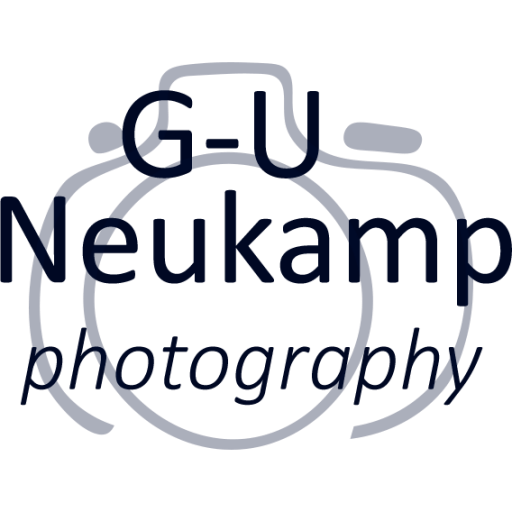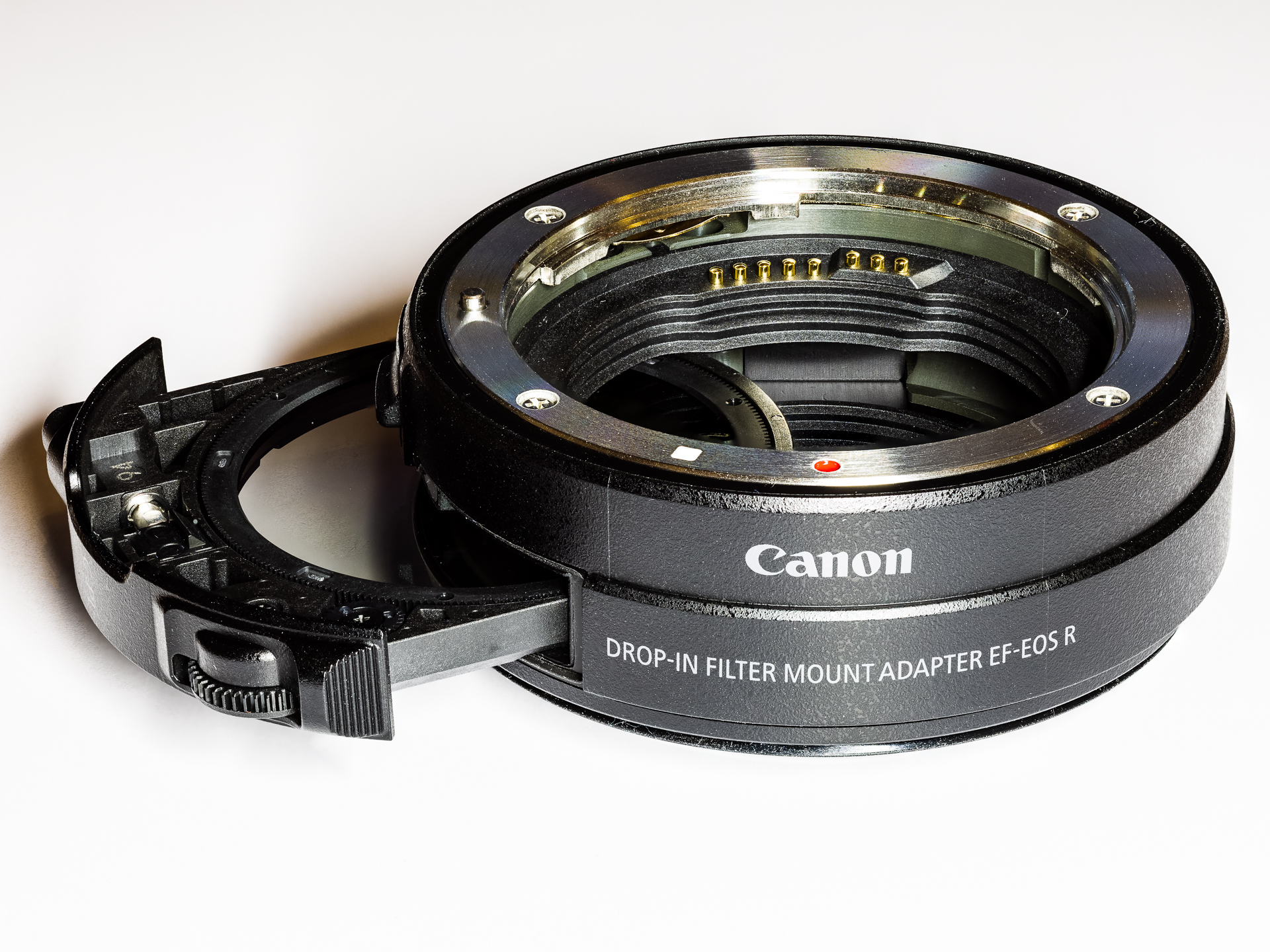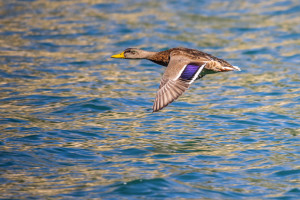As a long-time user of the Canon EF system, I have meanwhile a larger collection of high-quality EF lenses. To be able to use them on the new Canon EOS R5 with RF bayonet, Canon has released different adapters. Right from the beginning, I have been using the basic mount adapter on my EOS R5, but I was curious about the possibilities of an adapter with extended capabilities. Since I use a polarization filter very often, I therefore ordered the Drop-In Filter Mount Adapter EF-EOS R* with the C-PL polarization filter about 5 weeks ago.
After a long wait due to the tense delivery situation, I finally received and tested it. Here is a short report on the results.
In contrast to the basic model of the mount adapter, the Drop-In Filter Mount Adapter EF-EOS R has a filter slot, like those of the Canon Supertele lenses.
If somebody should think now: Great, then I can use my polarizing filter of my Supertele inside, I have to disappoint: I already use a polarizing filter for my EF 400 f/2.8L IS II USM, but it doesn’t fit into the mount adapter despite the same inner filter diameter - great job, Canon!
But before I go into more detail about the filter adapter, a few thoughts about the purpose of photographic filters. If all this is already known, the following section can be skipped.
Why do you need filters at all?
With analog cameras (these are the ones that used to require the insertion of film 😉 ), the post-processing possibilities of the images were very limited, so that filters were regularly used to compensate for color differences in artificial light or strong contrasts in brightness between sky and earth in landscape shots (with graduated filters). Especially when photographing with slide film, the possibility of post-processing was almost completely eliminated.
In digital photography, however, especially with RAW files, color correction can also be performed easily in post-processing. In the case of high brightness contrasts, I often take an bracketing series of 3 or more shots with different exposure times and combine them on the computer to create a shot that reproduces the desired dynamic range well. To a lesser extent, this can also be done directly from a RAW file, since today’s camera sensors have a much greater dynamic range than analog photographic film. The extensive possibilities of digital post-processing with RAW converters thus make many filters dispensable - but not all.
In short: Since I am photographing digitally, I use only two different types of filters on my lenses:
Grey filter (ND)
A gray filter is what its name says, gray. In fact, sometimes it is almost black. Its purpose is to reduce the amount of light reaching the sensor in a uniform and color-neutral way (ND stands for Neutral Density). In contrast to the stopping down of the lens, which changes the depth of field, it does not influence this. An image of non-moving objects taken with a correspondingly longer exposure time using a gray filter cannot be distinguished from one without it.
The purpose of the gray filter is usually to extend the exposure time. When filming, it is indispensable to achieve a suitable exposure time, which should usually be half the duration of the single frame (e.g. 1/60s at 30 fps), even in daylight and with an open aperture. Professional film cameras therefore often have integrated switchable ND filters of different strengths.
When taking photographs, however, a gray filter is often used to achieve motion blur in daylight. This makes it possible to display water surfaces smoothly regardless of the waves. For this purpose, I use an ND 3 filter, which only lets 1/1000 of the light through. Instead of 1/30 second exposure time you have to expose the filter for 30 seconds to get the same amount of light to the sensor. In the following I want to show two examples to illustrate the purpose:
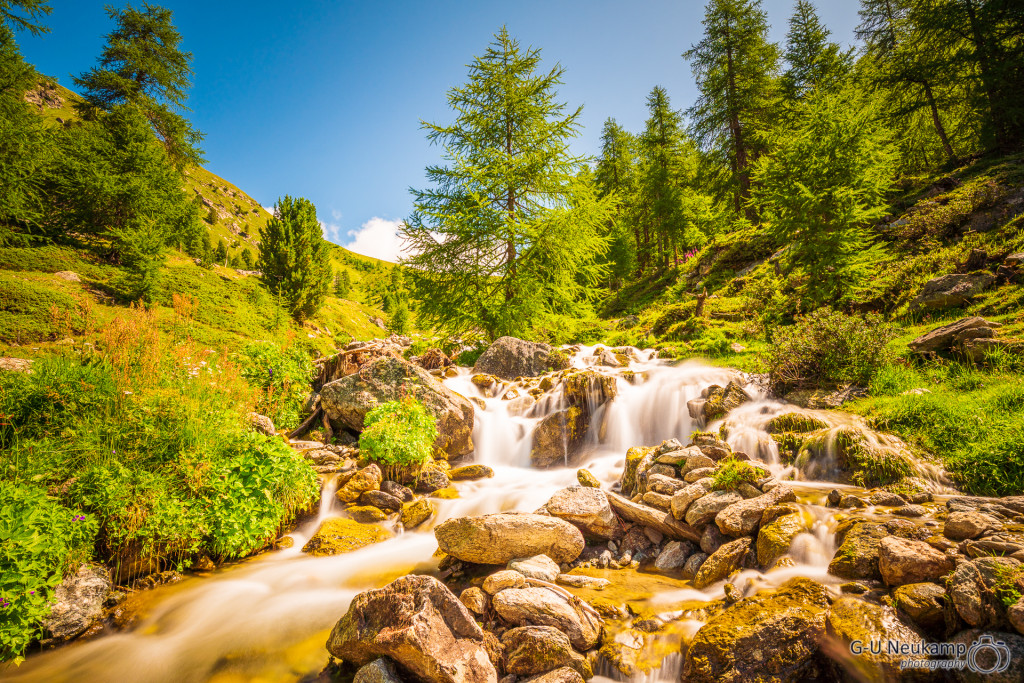
In the picture above, the long exposure time of 6 seconds makes the individual water drops appear as light tracks, which makes the picture look much calmer. Another example follows here:

The image above was also taken with a 1000x grey filter (ND-3) and an exposure time of 13 seconds. Due to the long exposure time, the surface of the water appears smooth, the wave motion is shown like a light foggy coating. The clouds appear more blurred due to the movement, the image therefore has a certain calmness.
Polarizing Filters
A polarizing filter allows light of only one oscillation plane to pass. Normal daylight and also artificial light consists of light rays that oscillate in all planes. On non-metallic surfaces, however, the light that oscillates perpendicular to them is reflected more strongly. If the polarizing filter is adjusted to a 90° angle, these light components are blocked out. This effect can reduce reflections on glass, water surfaces and other smooth surfaces.
This makes the green of the leaves look more intense and the sky turns to a darker blue color. This effect is most intense when the sun is at a 90° angle to the image detail, directly against or with the sun, the polarizing filter has hardly any effect. With strong wide-angle lenses that cover a wide range of angles, the effect can therefore vary in intensity in the different sections of the sky, which can sometimes be disturbing.
There are still linear and circular polarizing filters to be distinguished, but to go further into this difference would lead too far. In the end, however, in photography at present circular polarizing filters are used almost exclusively. Further details can be found at interest e.g. at Wikipedia.
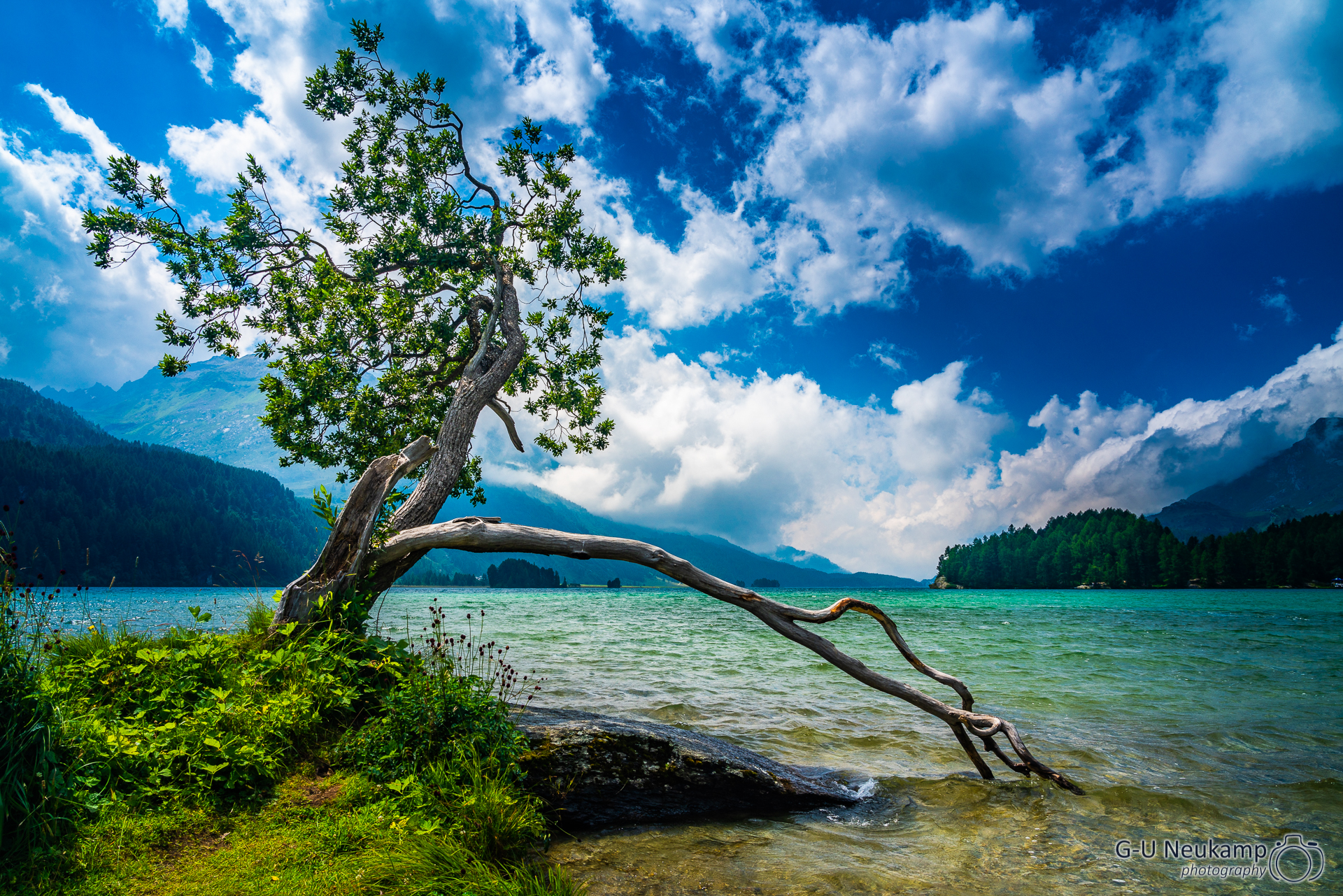
The above image is taken from the same position as the one shown above with the ND-3 filter. The post-processing in Lightroom was the same for both images. But this time I used a polarizing filter (B&W Käsemann*). The exposure time was now only 1/80 second. In comparison, you can clearly see that the green of the leaves appears much more intense, the sky shows a slightly more intense blue, the clouds are more clearly structured and the waves on the water are now perfectly visible.
I often use the polarizing filter for landscape and city shots when the sky is clear.
Back to the Mount Adapter Drop-In
Why did I buy this adapter now? As a long-time Canon photographer I have a large collection of Canon EF lenses, which I would like to use on my new mirrorless Canon EOS R5 as well. In addition I want to continue using my proven Canon EOS 5DSR DSLR which can only be used with EF lenses. Some of these EF lenses are also not yet available for the new RF bayonet. Canon was aware of this fact when they introduced the EOS-R system and therefore offered the possibility to continue using the existing EF lenses via EF-RF adapters.
In contrast to third-party solutions like those from Sigma (MC-11) for Sony alpha cameras, the EF lenses are even natively supported on Canon R cameras. Therefore the performance remains at least on the same level as with the Canon DSLR bodies. Some lenses, like my TS-E 17mm or the 85mm f/1.2L II even work much better on the EOS R5 than before on my DSLR. More details can be found in my initial experiences report about the Canon EOS R5.
Comparison of the filter types

In the picture above, I have placed the two filter types next to each other. The screw-on filter on the right is a high quality multi-layer coated model from B&W Käsemann* with 77mm thread. If you compare the grey values in the picture above, you can already see that the threaded filter absorbs a bit more light than the drop-in filter. Since both filters are on a white background and the incoming light therefore passes the filters twice, they appear darker here than in transmitted light.
Screw-on filters
Since many lenses have different filter diameters, you need several filter sizes or you have to adapt larger filters with adapter rings, which means a lot of fiddling. Furthermore, the lens hoods often do not fit anymore.
I have been using a very high quality 77mm filter (B&W Käsemann) that fits on my Canon EF zoom lenses from 16-200mm.
Even if the filter diameters of the lenses are identical, the filters have to be changed as well or you need several of them, which is quite expensive. There are also some lenses which do not offer the possibility to use screw-on filters because of protruding front lenses or which have such large filter diameters that filters become disproportionately large and expensive.
Currently I own 3 lenses with this problem: the TS-E 17mm, my Samyang 14mm and my Sigma DG OS HSM 60-600mm (with 105mm filter diameter!). For the wide angle lenses, you might use filter holders that are mounted in front of the lens, but they are also very bulky, expensive and difficult to mount.
Using the filter mount adapter
The filter in the filter mount adapter fits for all EF lenses and can remain on the camera when changing lenses. By the way, in addition to the polarizing filter I bought the Drop-in Clear Filter A* which can remain in the filter mount adapter if I don’t want to use the polarizing filter. This has the welcomed side effect of completely covering the shutter/sensor chamber when changing a lens, so that dust can be effectively blocked. I think this will prove its worth on dusty safaris (which we hopefully can plan again soon after Corona) in the future.
The question that interested me now was whether the drop-in filter is optically as good as my proven screw-on filter, which alone costs more than $ 100,-. Does it perhaps make a difference, whether the filter is located in front of or behind the lens?
Comparison test
In order to ensure identical conditions of comparison, I intentionally chose a static test setup with artificial light. The motive, that was used, is a small object that is very familiar to every Canon user:
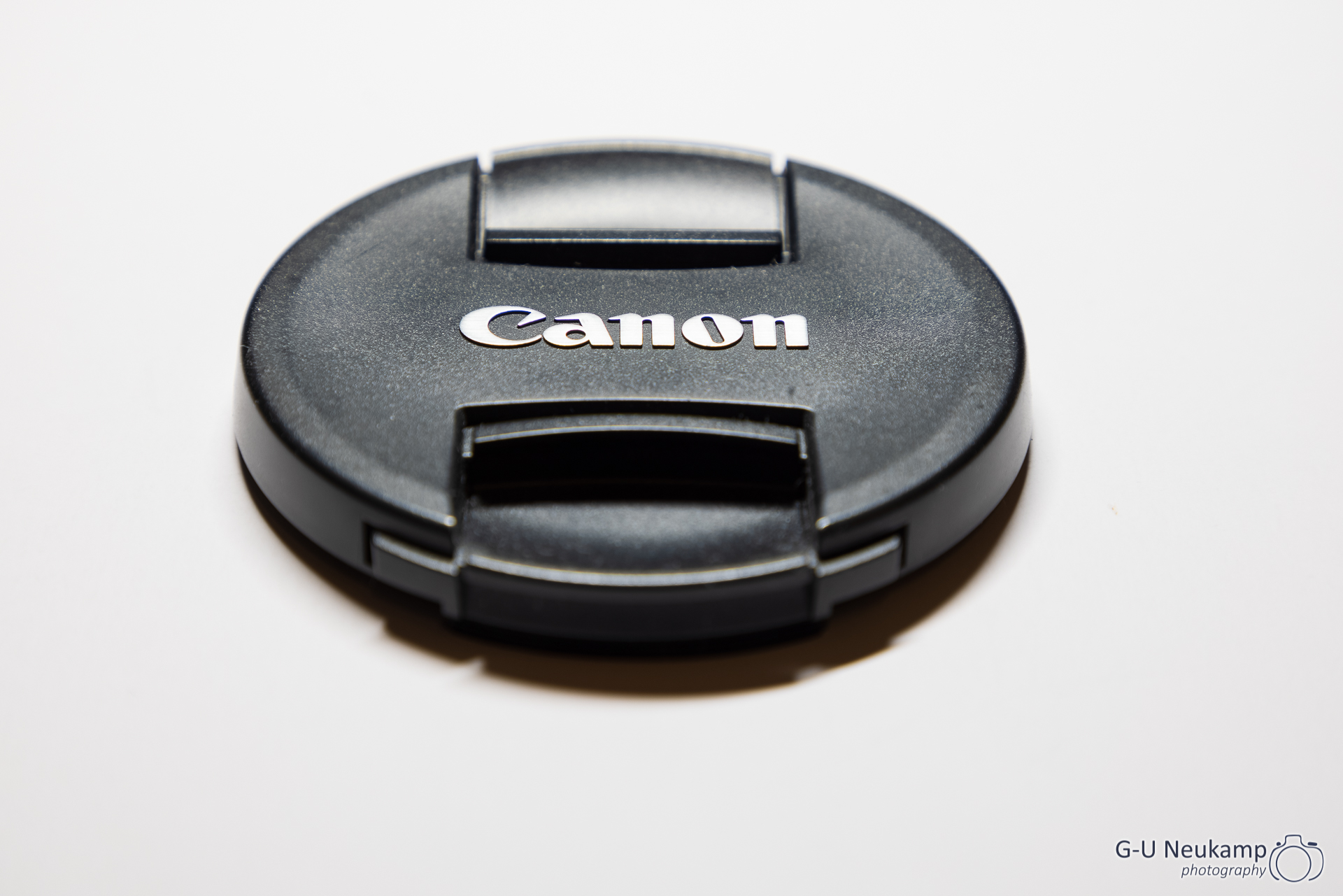
I put the lens cap on a white sheet of paper and illuminated it from behind at an angle of about 45°. I aligned the camera on a sturdy tripod at an angle of about 30° to the cap. All pictures were taken with the Canon EOS R5 and the EF 24-105 f/4L II IS USM lens at 105mm focal length, aperture 8, 1/8s exposure time and ISO 100 and edited in Adobe Lightroom Classic 10 with identical parameters. I adjusted the white balance in Lightroom with the pipette on the white background of the image without mounted filters to make any color deviations visible.
The following pictures show the version with the Canon Drop-In C-PL filter on the left and the version with the B&W Käsemann screw-on filter on the right.
First a comparison with both filters set to the minimum effect:

First of all, you can see here, that the right image is slightly darker than the left one. Therefore I have used LR to brighten the right image by 1/3 f-stop, in which case the brightness is comparable:

All in all, the Canon CP-L shows slightly more details only in the 200% view. In direct comparison, the screw-on filter provides a slightly warmer image. But both effects are absolutely negligible.
And now the much more interesting comparison of both polarizing filters using the maximum amount of visible effect:

Again, the image with the screw-on filter is slightly darker, so here again the comparison with brightening of the right image by 1/3 f-stop:

Fortunately, in direct comparison both images show a comparably good extinction of the reflections of the light source. This is surely the main thing. Again, the screw-on filter shows a slightly warmer image and shows slightly less detail, which is only visible in the 200% view.
By the way, the quality of the resolution can be objectified indirectly via the size of the RAW files: Canon stores them internally in a lossless compressed format. More detailed images can be compressed less than images with less detail. Since all other factors (image content, exposure parameters, lens) are the same for all images, the file size is therefore a suitable parameter for measuring the level of detail. The RAW files using the screw-on filter are between 1.6% and 1.9% smaller than those using the slide-in filter. However, this minimal difference is certainly absolutely negligible in real life.
Comparison under real conditions
In response to a special request, I compared both types of filters under real conditions. This time, during my trip to Africa, I took a photo of Mount Kilimanjaro in Tanzania.
The shots can be found below: on the left the shot with the Canon drop-in filter and on the right the one with the B&W Käsemann screw-in filter. Both shots were taken shortly one after the other with my Canon EOS R5 and the EF 16-35 f/4L IS with a focal length of 16mm, aperture f/6.3. I adjusted both filters to maximum effect. The image with the screw-in filter was brightened by +0.23 in Adobe Lightroom for direct comparison, all other sliders were left in neutral position.
Interestingly, the screw-in filter seems to give a slightly warmer tone. The WB-automatic of the camera determined a color temperature of 6250 °K there. With the drop-in filter, however, it was 6500 °K. But this minimal deviation is surely irrelevant in practice.
But enough of the preface, pictures say more than 1000 words:

So, what does the comparison show now?
Overall, I see little difference in both shots. At the same time, however, both images show a major problem of all polarizing filters with super wide-angle lenses. The effect of a polarizing filter is highly dependent on the angle of the light rays to the viewing axis. Thus, both images show a maximum effect approximately in the center of the image, where the light rays come from about 90° from the left. Towards the edges, however, the effect decreases more and more, since the lens covers an image angle of 108° in the diagonal and thus the angle from the viewing axis to the light rays deviates strongly from the ideal 90°. The edges of the image thus appear significantly brighter and with less contrast.
This effect is thus apparently independent of whether a drop-in or a screw-in filter is used. Whether you like the effect or not is a matter of taste. But it cannot be avoided when using polarizing filters.
Résumé
The Canon Mount-Adapter Plug-In EOS EF-R C-PL allows the use of a polarizing filter with all EF lenses, even with those which cannot be equipped with a front filter, like some super wide-angle lenses.
In its effectiveness it is absolutely comparable to a very high quality screw-on filter, the light transmission is even better than with my very good B&W Käsemann polarizing filter. In addition, by using a neutral filter, which can be purchased separately, the mount adapter can effectively prevent dust from entering the camera, which can be helpful in dusty environments.
In the near future I plan to buy an additional ND-gray filter. So far Canon only offers a variable ND filter*, but it is very expensive and I don’t need the variability. But there are more compatible filters announced by an external company. I will stay tuned and will report further if necessary…
Addendum: in the meantime I was able to purchase the original variable ND filter from Canon at a reasonable price. I have already used it several times with good results.
*= Affiliate Link
